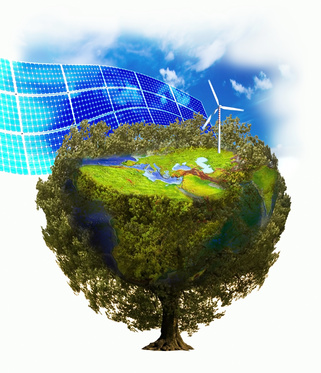Microgrid News has following, summarizing, and commenting on the microgrid market and related news for over four years – almost before anyone could spell m-i-c-r-o-g-r-i-d. And the task has suddenly become – difficult! Because instead of counting the number of pieces about microgrids (and stretching the definition) in a month on one hand, suddenly there are multiple pieces each day. One of my personal favorites is from this wrap-up article on New York’s 2015 Energy Week – calling microgrids the smart food (i.e. kale) of the energy world. On a more mundane level, a recent article focused on how microgrids could potentially help during an earthquake – a well-known emergency services application. Looking at all this from our longer-term perspective, it’s mildly amusing to watch to microgrids gain attention in the grid-connected world, while they have been quietly developing in the rest of the world for decades (sometimes called mini-grids in this particular application).
In Africa, this movement is going from smaller, aid-driven projects to an entire entrepreneurial ecosystem that combines governments, universities, and companies both tiny and behemoth. The phenomenon of “skipping the age of Edison,” i.e., communities that will have power but never see an electric grid, has its own challenges, but they are often more economic and sociological than power engineering. There is also the difficult issue of corruption. But Africa has already transformed money – why not lead the way in transforming economic and ownership systems around electricity?
A recent article in the Navigant Research Blog also discussed the “microgrid hype cycle” and the issues facing various microgrid markets. Although “hype” may still be the order of the day as far as the market being on its way to anywhere close to “mainstream,” it is definitely on the rise.
 The bottom line that’s causing all the hype is – the entire world – every corner of it – is finally looking at the potential for microgrids to fill many needs. We think that’s pretty exciting. At HOMER Energy, we recognize four major market divisions for microgrids:
The bottom line that’s causing all the hype is – the entire world – every corner of it – is finally looking at the potential for microgrids to fill many needs. We think that’s pretty exciting. At HOMER Energy, we recognize four major market divisions for microgrids:
- The energy access world, or “village power.” This group is the 1.3 billion people who currently have no access to electricity. HOMER has been working in this world for decades.
- The island world. Smaller islands that aren’t connected to the mainland power system have always been powered by microgrids. Along with remote villages, they have more complex issues than most village power systems, because they often have multiple diesel generators.
- The unreliable grid world. I don’t have a number for it, but in much of the world, electrical “access” is based on a very unreliable set of wires. Middle class households and businesses mostly have to provide their own power.
- The resilience world. This is the world where the grid provides affordable, reliable power – until one day it doesn’t. The northeastern US has been the centerpiece of this world recently, as the realization of what a series of storms can do has hit home hard.
The energy landscape is suddenly changing very quickly, and microgrids are a big piece of that change. Here at HOMER Energy’s Microgrid News, we think it’s time that we move beyond Edison and eat our kale.
